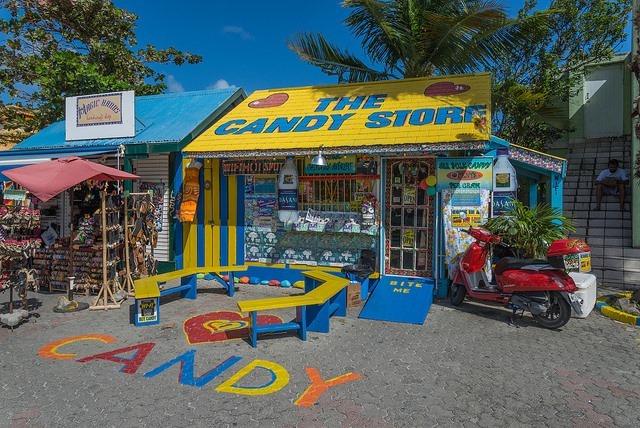
Local Store by Dale L Puckett
The continuous rise in time spent on mobile devices by on-the-go consumers has a direct relationship with how individuals relate to and engage their local community; specifically businesses in their immediate area.
For small business owners that are plagued with the constant decision of how to allocate and invest their limited marketing budget, choosing between expensive offline mediums like television or trusting the Internet to deliver foot traffic, there are now more reasons than ever to believe in the power of local search.
According to an ongoing consumer tracking study conducted by BIA/Kelsey, 97% of consumers search for local businesses online before making a decision of where to shop. So it is in the best interest of any small business owner to develop and include local search tactics in their search engine optimization campaign.
The fact that 69% of searches are affected by geolocation, incorporating various geo-modifiers in a brands site and maintaining profiles on location-based social networking sites are key for maximizing traffic online and on foot.
While technical integrity, consumer relevance and user experience are paramount for any site to gain significant search visibility; for mom and pop shops that are interested in getting results sooner than later, there are three specific tactics that can be implemented almost immediately.
Create A Google+ Profile And Connect With Places For Businesses
It is completely understandable that most small business owners are too overwhelmed and overworked to spend a tremendous amount of time developing their websites to align with the latest search trends. However, there is absolutely no excuse when it comes to not connecting with Google's ever-growing G+ world.
Since launching in 2011, over 540 million consumers have connected with Google+ so it makes complete sense to spend thirty minutes creating a business profile that has the potential to drive immediate traffic and increase sales.
Owners that utilize Places for Businesses are able to offer and display important points of information directly in search listings that allow online consumers to understand:
- Hours of operation
- Physical address of any and all retail or brick and mortar locations
- Consumer reviews and personal testimonials
These forms of structured data act as catalysts for increasing traffic and click-through-rates, as consumers are able to make an immediate informed decision based on social proof.
Learn more:
- Learn the difference between the 3 types of local Google pages (& which one to get, how)
- Easily Solve 3 Common Google+ Local Profile Problems
Become More Social On Location-based Networking Sites
Adding a business listing or creating a profile to social media sites that specialize in connecting on-the-go consumers with places of business around their immediate area is a must for developing a successful local search campaign in 2014.
Connecting with sites like FourSquare and setting up business listings on local directory sites like Yelp are critical for placing small businesses in front of consumers who are out and about and looking to say, find a great Italian restaurant or pick up flowers from a boutique on the way home from work.
The fact of the matter is, consumers are going to most likely choose a place to do business with based on whatever search listings are dictated to them by search engines like Google. So if the owner of Sam's Pizza is not interested in or is too busy to set up these profiles, their competitors will and they will take business away for as long as their category space is unmatched.
Learn more:
- Social Networking For The Local SMB
- How Location Based Marketing is Changing Everything
- How Pinterest Place Pins Are Effective For Your Local Business
Make Your Site More Mobile Friendly
Smartphone penetration is continuously growing year over year and increased by 44 percent from 2011 to 2013. That means small business owners need to adopt a user-friendly mobile experience in their ongoing search marketing/web development campaigns if they are truly interested in maximizing opportunities considering:
- Visibility
- Traffic
- Conversions
- Immediate Leads/Sales
Best practices currently dictate that businesses should utilize and incorporate responsive web design opposed to creating and maintaining a separate mobile website. Not only does the Internets largest search engine recommend this but managing a responsive design mobile site is much easier to manage.
Owning a desktop site that differs from its corresponding mobile site forces business owners to have to manage two separate sites and thus, two separate SEO campaigns, while responsive design connects the desktop version with mobile devices, allowing all updates, changes and edits on the desktop version to be immediately accounted for when users browse the mobile version.
Learn more:
